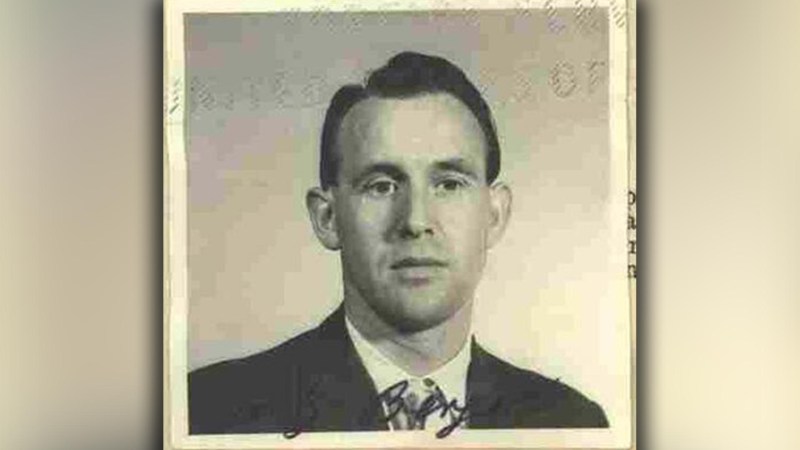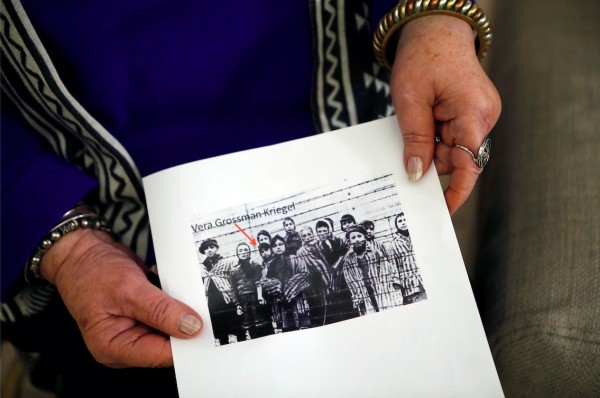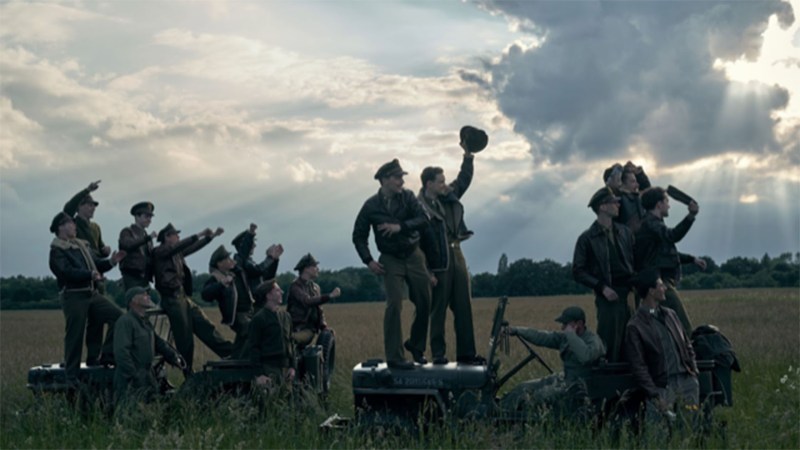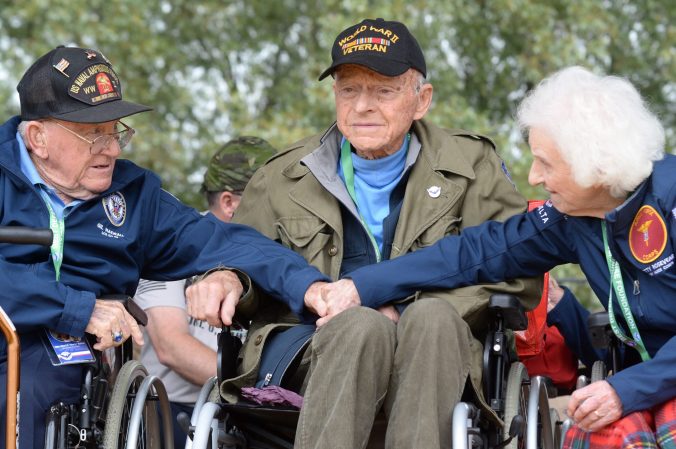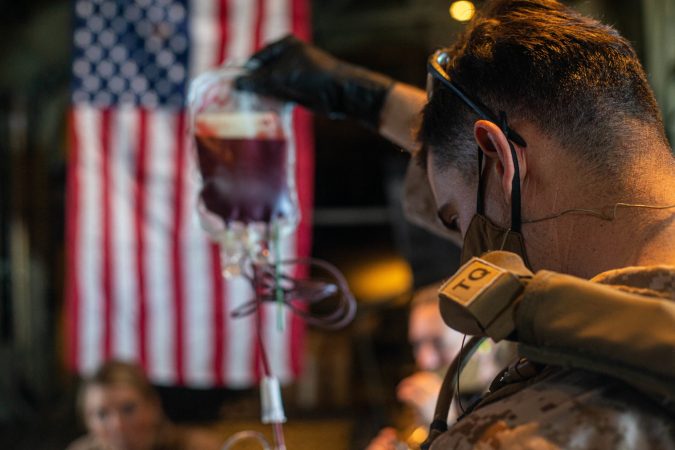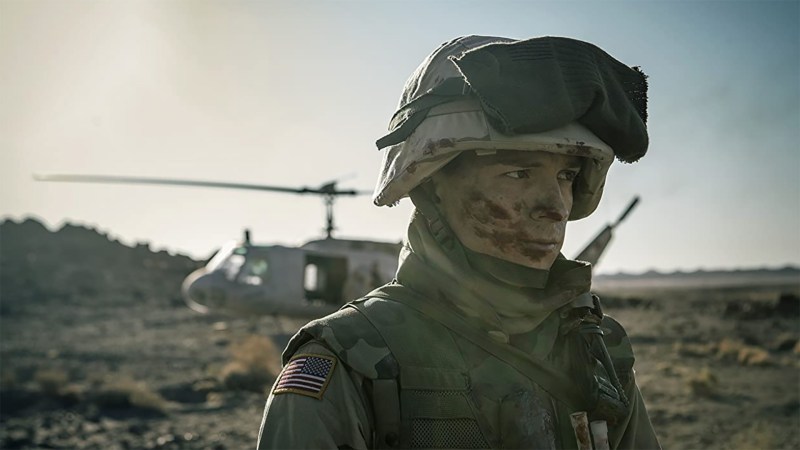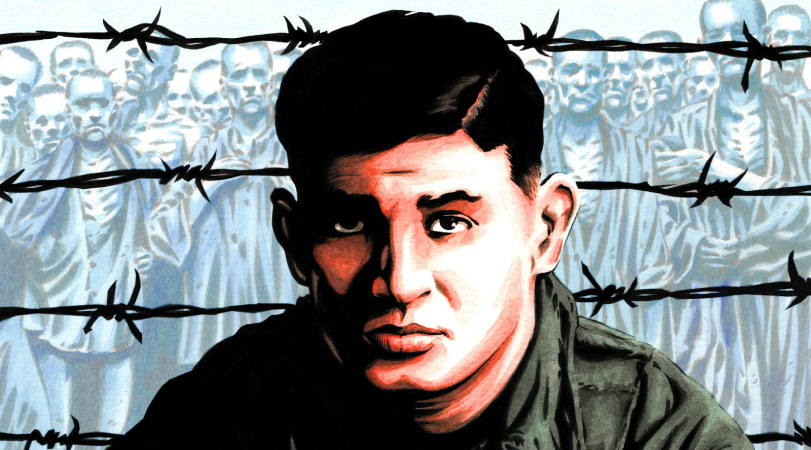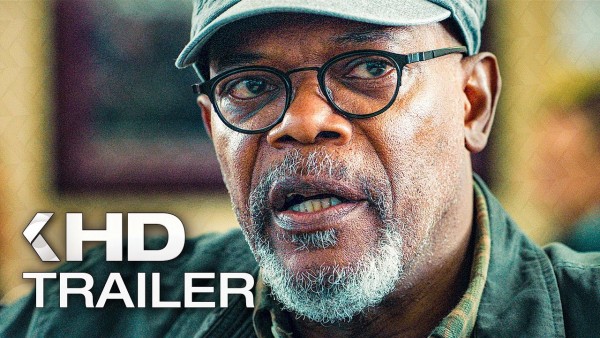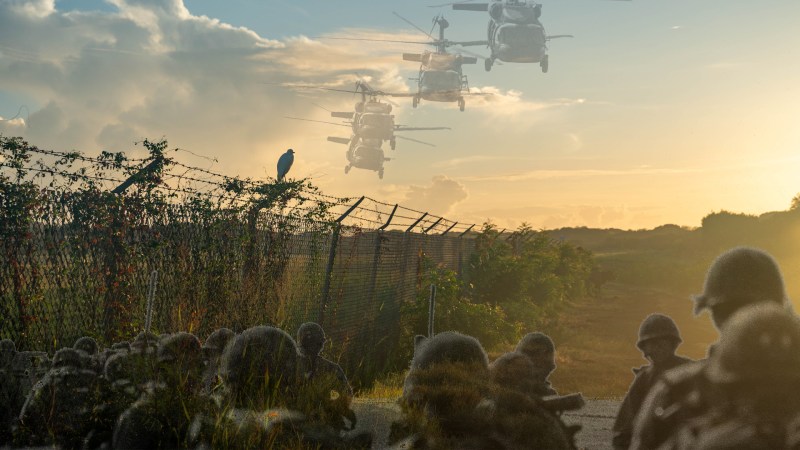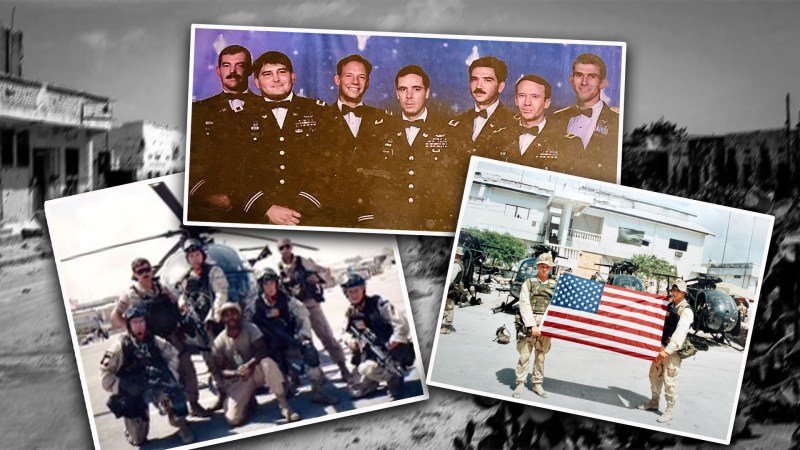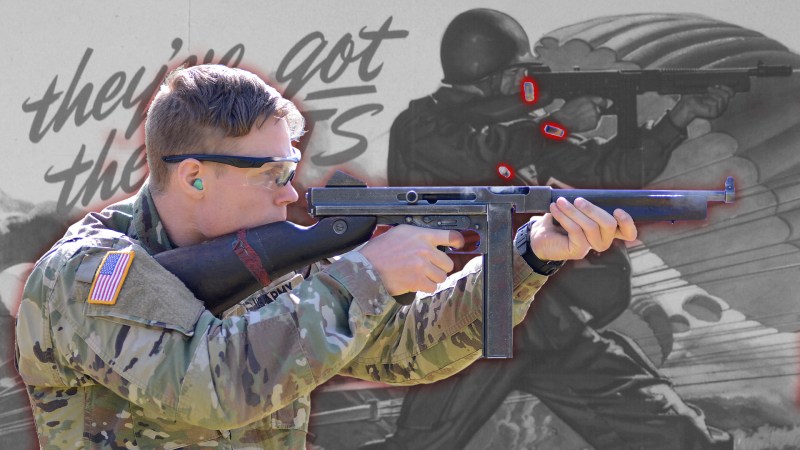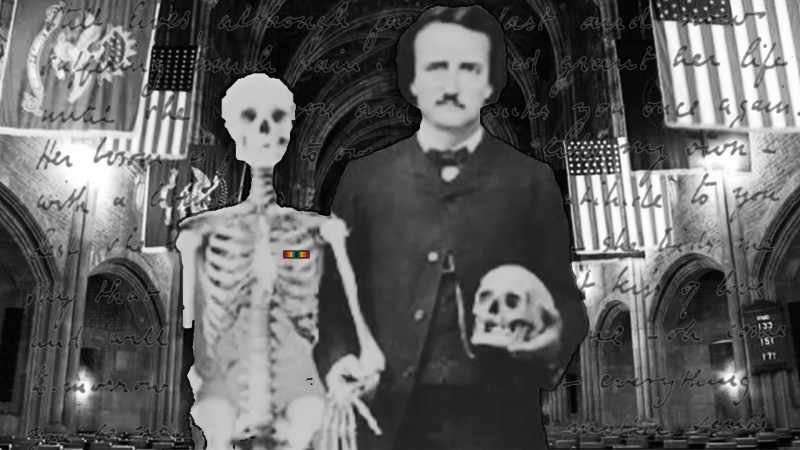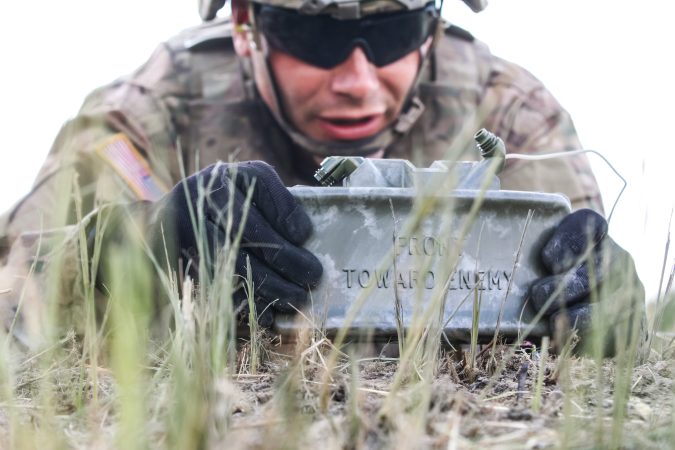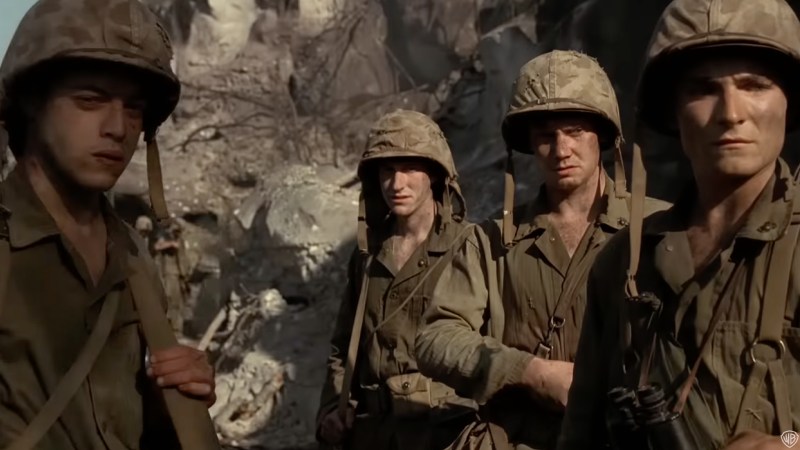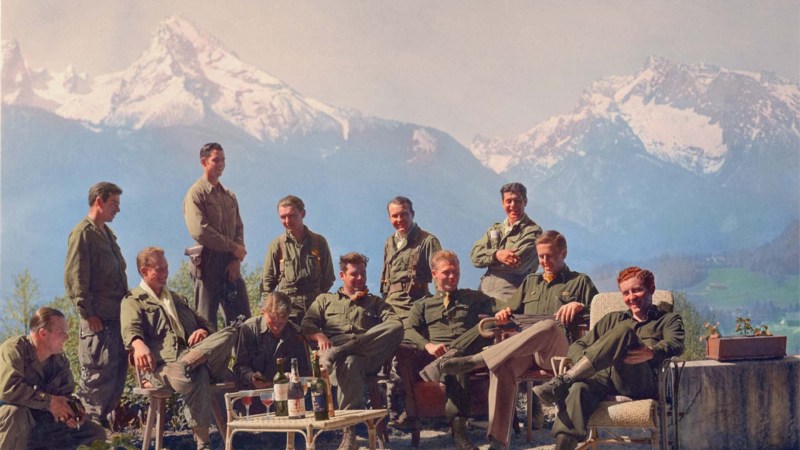An 18-year-old American Jewish soldier arrived in the Army too late for World War II, and instead found himself a prison guard at Nuremberg, watching over Nazi prisoners while judges in their trials for war crimes determined their fate.
“Nathan-ism” tells the story of Nathan Hilu, a U.S. soldier who was assigned to suicide watch over the Nazi masterminds of the Holocaust during the trials months after the war’s end in 1945. The film explores Hilu’s experience through colorful, cartoon-like drawings, depicting scenes from the prisons where Nazis were held during the courtroom trials.
The film will be shown Feb. 13 in Courtroom 600 of the old Nuremberg courthouse, which is now a museum. The name of the film comes from the former soldier’s name for his drawing style, Nathan-ism — a painting style as valid as futurism, cubism, impressionism or any other “ism,” he says in the film.
Hilu died at 93, as the film was in production, according to the director, Elan Golod.
“It starts as kind of about his experience in Nuremberg, but becomes more of a character study of his relationships, his stories and memories and kind of how that was the driving force in his life,” Golod told Task & Purpose.
At 18, Hilu was one of the few Jewish-American soldiers in charge of ensuring that senior Nazi generals and officials lived to see justice at the Nuremberg Trials.
“You have these Nazis, they helped Hitler kill six million Jews in the Holocaust. And I, a Jew, helped punish them,” Hilu said in the film.
Between 1945 and 1946, the Allied powers tried 199 people at Nuremberg who worked for the Nazis; 61 were convicted and 37 were sentenced to death.
Knowing the odds the Nazis faced, trial officials worried that suicide attempts might be frequent. The American soldiers who guarded the Nazis during the trials watched them from a barred cell window with a large lamp directed at them to illuminate their every move.
“We were told to guard them with our life,” Hilu said.
The National Jewish Welfare Board, a civilian support arm created in WWI for Jewish Americans in the U.S. military, estimated that around 550,000 Jews served among the more than 12 million Americans who served during the war.
“Many of the Jews that joined the military in WWII were eager to fight Germans. They didn’t know the details of the Holocaust but they did know close to a decade of what Nazi policies towards Jews were,” said Michael Rugel, director of programs and content at the National Museum of American Jewish Military History.
In part due to the younger demographics of American Jews in the 1940s, Jews made up a “slightly higher percentage” of the armed forces than they did the U.S. population at large. Many American Jewish troops were the children of immigrants or immigrants themselves, according to Rugel. For some, their military experience was a “confirmation of their Americanization,” he said.
During World War II, Hilu was a soldier in the Third Infantry Battalion’s cannon company. He later served in the Army through the Korean War, with assignments in Europe and Tokyo, where he was attached to the Counter Intelligence Corps, according to the American Jewish Archives.

Hilu came from a Sephardic Jewish family in Damascus, Syria. His grandfather was chief rabbi in Damascus and his parents came to the U.S. as immigrants. As an artist, Hilu never got along with his father, who expected his son to become a businessman, so he joined the Army to escape.
“The Army said join up and see the world and I did,” Hilu said in the film. “I think the Army brought me to life.”
Subscribe to Task & Purpose today. Get the latest military news and culture in your inbox daily.
Hilu passed away in 2019. He received a military burial.
“He probably would identify as a Jew first and soldier close second. It was a big part of his identity,” Golod said. “He still wore different military pins on his lapel all the time.”
Germany
In April 1970, Hilu published an article in the Jewish Currents magazine, titled “My Memoirs as a G.I. Guard In The Nurnberg Prison: Observations of a Jewish soldier.” Hilu’s writing explored day-to-day life in the prison, the personalities of his Nazi prisoners, and his overall experience as a guard.
“I have often wondered to this day why the Army used us lowly ‘uneducated’ enlisted men as guards for these prisoners when they could have used a whole staff of Army Doctors trained in psychiatry as the guards,” Hilu wrote. “But since only guys like me were used as the guards I hope you will bear with me and my laymen’s psychoanalysis of my prisoners.”
Once Hilu was given orders to Germany by his sergeant, he had an hour to pack his bags, he wrote. While en route to Germany, Hilu recalled being on a ship with other American Jews and U.S. soldiers and being told not to fraternize with the Germans, he said in the film.
“We were told to treat the Germans on trial with respect,” Hilu said. “We took good care of them.”
In his writing, Hilu described the city of Nuremberg as “all bombed out” and looking “so sad and ugly that it depressed my artistic soul.”

The soldiers’ quarters were simple with only a bed. Meanwhile, the Nazis’ prison cells were similar in size but with a bed, small table, sink, and toilet. The rooms of the soldiers and prisoners were separated by a heavy wooden iron door.
“The Army has been known to give its men all kinds of fancy quarters from a wooden barrack, pup tent to a fox hole, but how many have been so fortunate like I was to have a prison cell as his quarters?” he wrote.
Hilu and his fellow soldiers were in charge of guarding the Nazi prisoners only while they were in their cells. The American guards had no weapons except a billy club attached to their belts. A different set of guards with white helmets were in charge of the prisoners during the trial.
The Nazi prisoners “did not look like criminals,” but rather professors, “cheap bureaucrats” or “the kind that ride the New York subway to work,” Hilu wrote.
Hilu’s writing includes his first meeting with Hermann Göring, who was in charge of the German Air Force, former Gestapo head and one of the highest-ranking Nazi officials tried at Nuremberg. Hilu described him as a “murderer and scoundrel, Nazi beast dressed in human dress.”
“A little terror filled my PFC soul. I was glad that I was guarding him and not that he was guarding me,” he wrote.
As he watched Goering and other prisoners through their cells, the guards were to monitor their every move, also making sure that the Nazi inmates didn’t cover their heads with a blanket. The prisoners saw a variety of visitors throughout the week, including high-ranking allied officers. Every morning, a doctor came for a checkup, and a German barber for a haircut, trim, or shave.
The Nazi prisoners ate “good American food” and got second servings while Germans outside were starving, Hilu noted in the film. “It’s not fair in a way,” he said. The prisoners ate out of Army mess kits and were given more food than the soldiers who were guarding them, Hilu said in his magazine piece.
A German librarian also brought daily deliveries of art books to the prisoners which Hilu found ironic – many of the Nazi prisoners got to admire pieces by artists like Rembrandt van Rijn, who used Jewish models from the ghettos across Europe.
“As long as people were alive, kill kill was the creed that my ‘Art Loving’ prisoners lived by. But if they were painted by some great artist, then they were safe and protected!” Hilu wrote.
Hilu also writes about a conversation with Baldur Von Schirach, head of the Hilter Youth movement. Hilu asked Schirach, who was in charge of the deportation to Poland and execution of 50,000 Austrian Jews, why the Nazis targeted Jews.
“We picked on the Jewish people because they were the middle class. This class of society has always been in favor of Democratic governments. And to get our party, the Nationalist Socialist Party, into power we had to remove their influence from Germany,” he told Hilu.
Memory

Throughout his life, Hilu made drawings to record his memories. In the film, Hilu described himself, not as a historian, but rather as an artist who draws what he sees.
“It’s like my therapy. If I didn’t draw, I’d have dementia,” Hilu said in the film. “When I draw that stuff, I see it. It’s like I enter another universe when I’m drawing.”
The film also dives into some of the gaps between Hilu’s memories, which cannot be fully corroborated, and historical evidence.
“His life and work raise questions, not just about the episodes of world history to which he unwittingly bore witness (of which there are many), but about the need to find meaning in our lives, and the effect that can have on our memories,” Golod said.
Golod said he hopes the film can add to the conversation about personal experiences in relation to historical events, narratives, and evidence.
“I don’t think it’s one or the other. They have to coexist in some way,” he said. “I think there are so many elders out there who want their stories heard, and I think it’s important to take the time to listen to them.”
The film explores human memory, history, and the overlap between the two. He was interested in capturing Hilu’s obsessive nature of repeating the same stories over and over to make sure his experience was not forgotten. This was especially timely, Golod said, in an era in which a historical event like the Holocaust is being met with increasing amounts of denial and skepticism as the final generation with direct memories of it grow old.
“I think it can add another layer to the conversation about truth and in today’s world – how do we preserve history and individual memories when people can easily deny basic facts,” Golod said. “I don’t have a perfect solution for this issue, but I think calling attention to it is important.”
The latest on Task & Purpose
- Navy will name a new ship for the ‘human tugboat,’ a forgotten WWII hero
- Soldiers now must pay out of pocket to store cars and belongings while deployed
- Inside a new technology for Marine marksmanship training
- Apple TV+ releases the opening title sequence for Masters of the Air
- Meet the skateboarding Green Beret shredding the civilian-military gap


